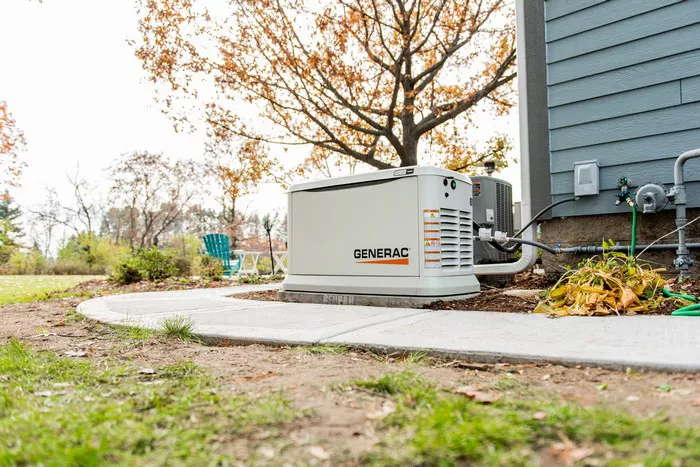A 22kW generator is a popular choice among homeowners seeking reliable backup power for their properties. But how much can such a generator power? This comprehensive article will explore the capabilities of a 22kW generator, detailing what size of home it can support, what factors influence its performance, and practical considerations to keep in mind.
Understanding the Power Output of a 22kW Generator
A 22kW generator can produce up to 22,000 watts of power. This level of output is substantial, allowing for the support of most medium to large homes during a power outage. To grasp the full potential of a 22kW generator, it is essential to understand the power needs of various household appliances and systems.
Electrical Load and Wattage Requirements
Appliances such as refrigerators, air conditioning units, water heaters, and ovens require significant wattage to run. For example, central air conditioning systems may need anywhere from 3,000 to 5,000 watts to operate, while a refrigerator typically consumes 600-800 watts.
Peak vs. Continuous Power
Generators have both peak (or surge) power and continuous power ratings. The 22kW rating refers to its peak capacity, while continuous power is usually slightly lower. This means that the generator can handle short bursts of high demand, such as when appliances first start up.
What Size Home Can a 22kW Generator Support?
The specific size of the home that a 22kW generator can support depends on the total wattage required. Here’s a breakdown of what to expect:
Small to Medium-Sized Homes (1,500 to 2,500 sq. ft.): A 22kW generator is more than sufficient for homes within this size range. It can power essential systems like heating or cooling, kitchen appliances, lighting, and most household electronics.
Larger Homes (2,500 to 4,000 sq. ft.): While a 22kW generator can still handle many larger homes, it may require some load management. Homeowners might need to prioritize essential circuits and stagger the use of high-wattage appliances to avoid exceeding the generator’s capacity.
Luxury and High-Energy Homes (4,000+ sq. ft.): For homes larger than 4,000 square feet or those with high energy consumption due to advanced HVAC systems, pools, or home theaters, a 22kW generator may not be sufficient to power everything simultaneously. In such cases, a more powerful generator or additional energy solutions may be needed.
Key Household Systems and Their Power Demands
To understand the capability of a 22kW generator, it’s crucial to look at typical household systems and their power consumption:
Heating and Cooling: Central air conditioning units consume around 3,000 to 5,000 watts, while electric furnaces can use up to 20,000 watts. If heating is primarily gas-powered, the generator’s capacity will be freed up for other uses.
Kitchen Appliances: A combination of a refrigerator (600-800 watts), microwave (1,000 watts), and an electric stove (up to 2,000 watts) can add substantial load.
Lighting and General Electronics: Lighting throughout the house and basic electronics like TVs and computers typically use between 500 to 1,500 watts, depending on usage.
Water Heating and Laundry: Electric water heaters can draw 4,000 to 5,000 watts, and laundry appliances like washers and dryers can add another 2,000 to 5,000 watts combined.
Load Management Strategies
Managing the load effectively is essential to make the most of a 22kW generator:
Prioritizing Essential Circuits: Ensure that the most critical systems, such as the HVAC, refrigerator, and basic lighting, are prioritized. This helps in maintaining comfort without overloading the generator.
Staggering High-Energy Appliances: Avoid running high-wattage appliances like electric stoves, dishwashers, and water heaters simultaneously. This practice prevents the generator from being overburdened and ensures a steady power supply.
Using Smart Load Management Systems: Modern generators often come equipped with smart load management features that automatically control power distribution. This ensures that the generator can maintain optimal performance without manual intervention.
Factors Influencing Generator Performance
Several factors can impact how well a 22kW generator powers a home:
Fuel Type and Availability: Most 22kW generators run on natural gas or propane. The choice of fuel can affect performance; for instance, propane tends to provide more consistent power output.
Altitude and Environmental Conditions: Generators may lose efficiency at higher altitudes or under extreme weather conditions. It’s crucial to ensure the generator is rated for the specific environment in which it will be used.
Maintenance and Condition: A well-maintained generator operates more efficiently. Regular servicing, oil changes, and timely replacement of worn-out parts can extend the life and reliability of the unit.
Practical Considerations When Choosing a 22kW Generator
Before opting for a 22kW generator, homeowners should consider
Power Assessment: Conduct a detailed power assessment of the home’s requirements. This ensures the generator’s capacity aligns with the household’s energy needs.
Installation Costs and Requirements: Installing a 22kW generator typically involves additional expenses for transfer switches, wiring, and professional installation. These costs can vary based on the complexity of the installation.
Noise Level and Location: Generators can be noisy. Ensuring that the unit is placed in a location that minimizes disturbance while complying with local codes is essential.
Conclusion
A 22kW generator is a powerful option that can support a wide range of household sizes, particularly small to medium-sized homes and even some larger homes with careful load management. By understanding the power demands, implementing smart usage strategies, and considering factors like fuel type and maintenance, homeowners can maximize the utility of a 22kW generator. Proper planning and assessment ensure that during an outage, a 22kW generator can provide reliable, seamless backup power, maintaining comfort and safety for the entire household.
Related topics:

